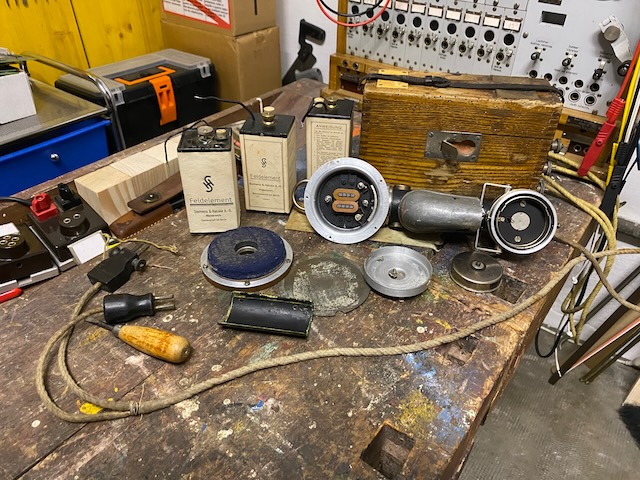
Find more details on German field telephone history on the German Field Telephones Timeline.
Electrical Telegraphy was used by the German Army from the mid 1850ies onwards. Initially part of the Pioneer Corps the "Telegraphentruppe" (Signal Corps) was established as independent branch in 1899 [3]. A first portable telephone was introduced in 1894, the "Patrouillenapparat" [4]. In 1905 an updated version of the "Patrouillenapparat" was introduced, initially called "leichter Feldfernsprecher" ("leicht" = lightweight), later called "Armeefernsprecher" [3] - and even later after the introduction of the newer "eiserner Armeefernsprecher" ("eisen" = iron) it was called "Armeefernsprecher alter Art" ("alte Art" = old type) [2]. It is made of aluminium and has a builtin buzzer. Line binding posts are on the additionally required battery box.
Device description from [1].
The army telephone consists of: the microphone (for speaking), the buzzer (to call the remote station), the telephone receiver (for listening) the cable with the plugs, and the buttons. The buzzer is housed in a leather-covered aluminum tube that forms the handle of the army telephone and carries the telephone receiver at the top and the microphone at the bottom.
To connect the lines and to power the buzzer and the microphone an external battery box has to be connected, there were several different types, here we present it with the "Sprechbatterie der Feldartillerie" (Speech battery for field artillery) which is identical to the "Armeesprechbatterie" (Army speech battery) but has instead of one line (L) and one earth (E) binding post three line binding posts and one earth binding post. The three binding posts are interconnected (not used for patching between the three lines), it seems to have been an artillery requirement to often connect multiple lines fix together.
The here presented "Armeefernsprecher" was made by Siemens & Halske, the "Sprechbatterie der Feldartillerie" was made by Simson & Co, later famous for the production of the east german Schwalbe motor scooter.
Foldable mouth piece.
Disassembled.

Ready for use.
Battery and line plug connected to battery box.
The wooden level on the front is the press to talk button (made of wood to improve usability in cold weather [1]).
The black button on the left is for improved reception (shortens out secondary coil), the right button (white, not visible here) is for the buzzer.
On the RX side a blue felt cushion is mounted, the felt cushions were replaced from time to time when too dirty [1].
The additional headset is connected to the "Armeefernsprecher" bottom sockets.
This headset is a later (1915) "eiserner Kopffernhörer".

Handset with receiver iron diaphragm, microphone capsule and buzzer door removed.
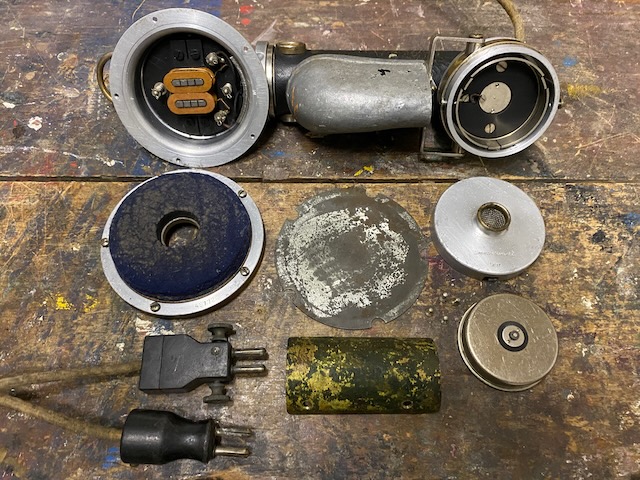
Buzzer.
Coils barely visible behind buzzer plate.
Adjustment screw on the left.
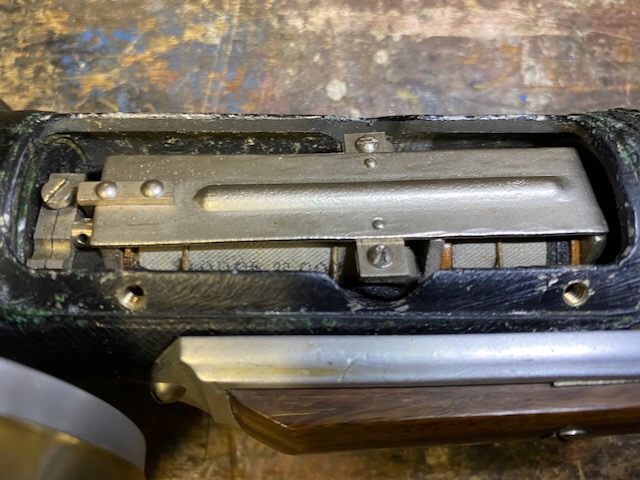
TX side with removed capsule.
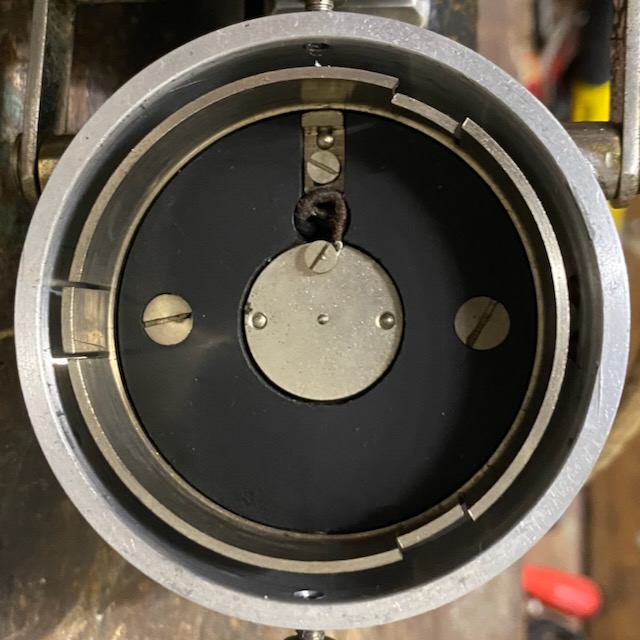
RX side.
The black platform is the magnet which can be moved up and down by the screw on the handset back.
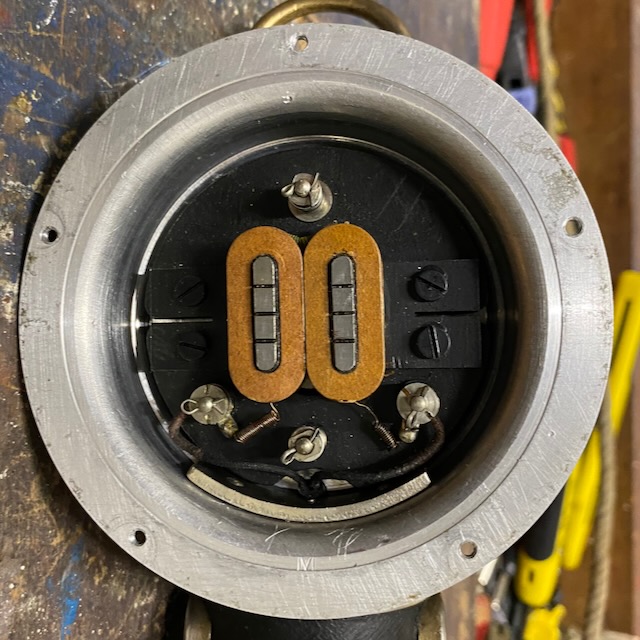
The RX coil, 2x 100Ohm.
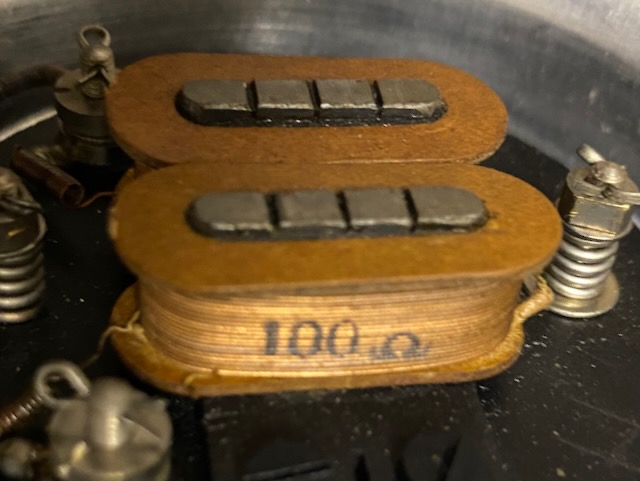
"Siemens & Halske" label on the TX side.
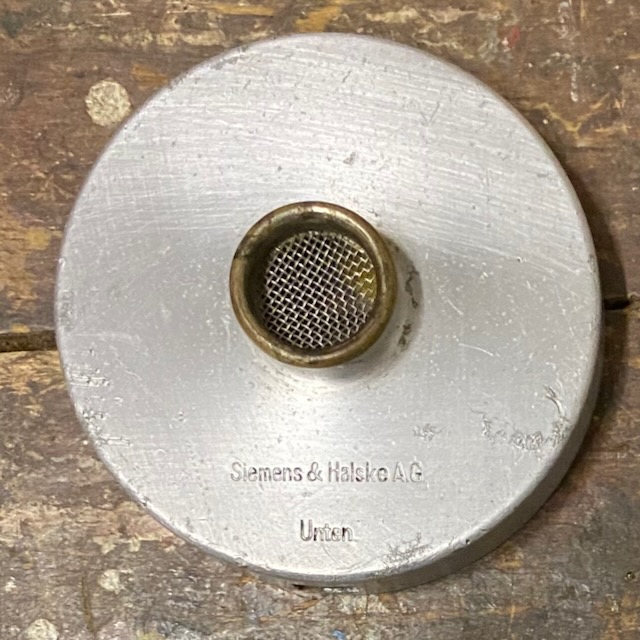
"Siemens & Halske" label on the RX side.
From ~1905 onwards the Siemens & Halske telecom production sites were called "Wernerwerk" (after Werner von Siemens) [8].
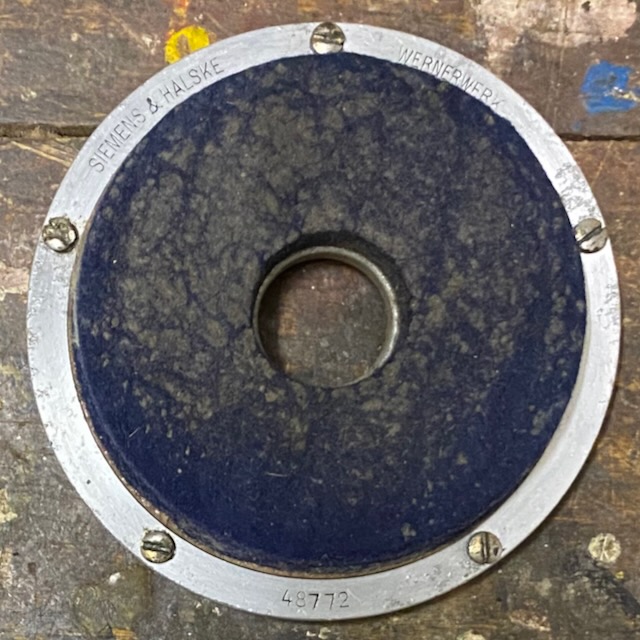
On the back of the RX side a screw allows to adjust the distance between the magnet and the iron diaphragm to adjust receiver quality [1].
The arrow "ab" (=downwards) indcates that the magnets will be moved inside the cup downwards = farther away from the diaphragm.

The black button is the "loudness" button.
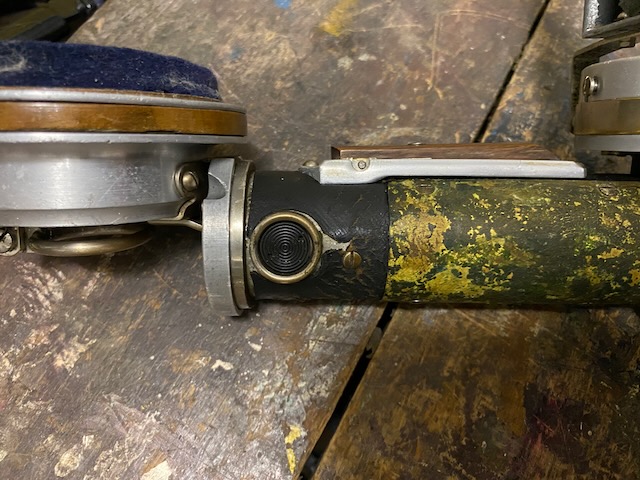
The white button is the buzzer button.
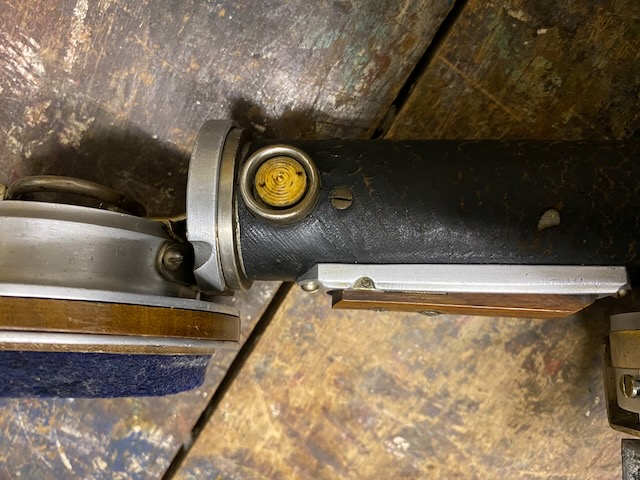
The headset sockets on the handle bottom.
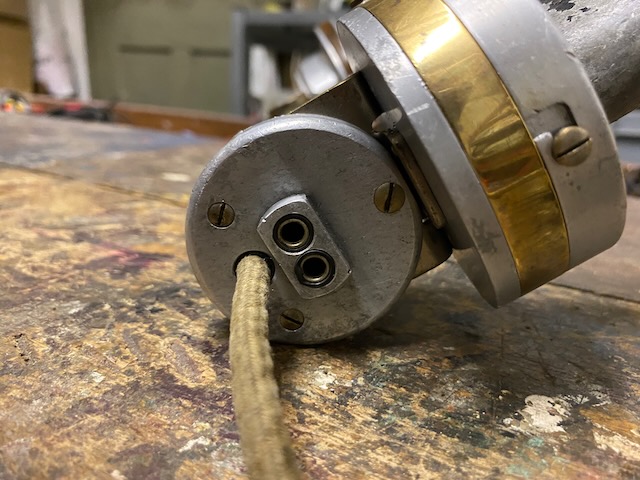
Ready to store.
The "Armeefernsprecher" is stored in a leather covered sheet-metal case for transport.
This case here is made in 1915, probably rather designated to transport a later "eiserner Armeefernsprecher", but the earlier cases seem to be identical [1].
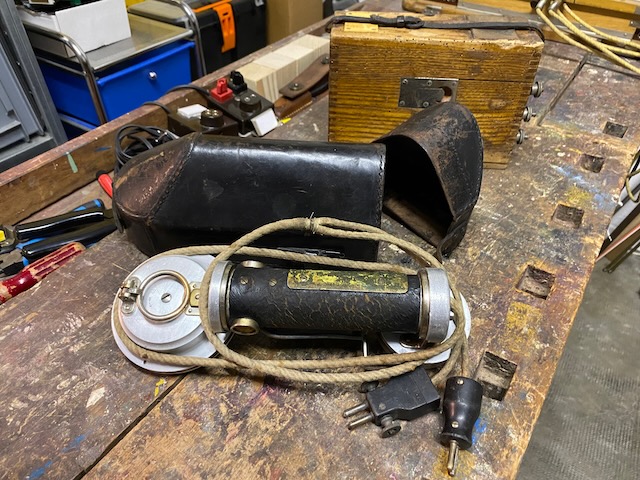
Stored.
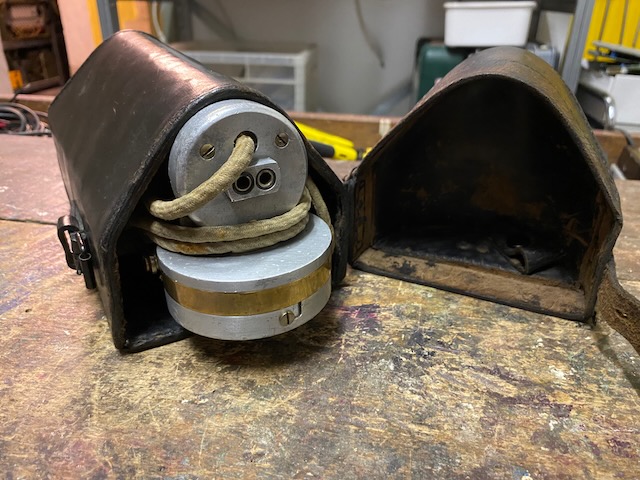
Ready for transport.
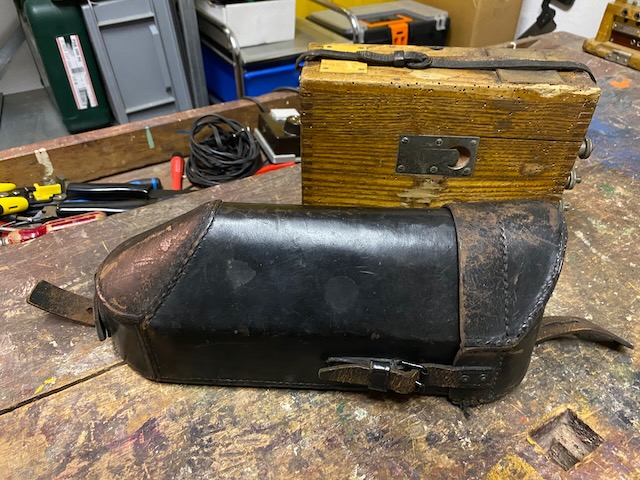
Made by "Gustav Reinhardt Berlin", 1915.
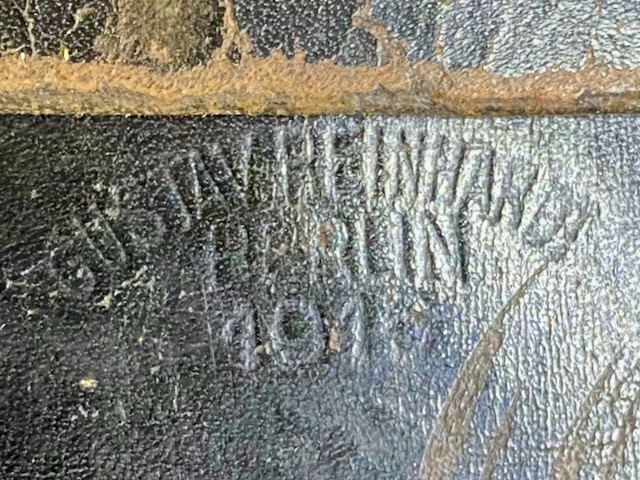
"Sprechbatterie der Feldartillerie" with open lid and elements and bottom felt removed to see the wood inlaid wiring.
The contact plates between bottom and lid make contact for the patch sockets mounted in the lid.
The "K" contact is the + ("Kohle-elektrode", carbon cathode), the "Z" is the - ("Zink-elektrode", zync anode).

Made by Simson & Co, Suhl.
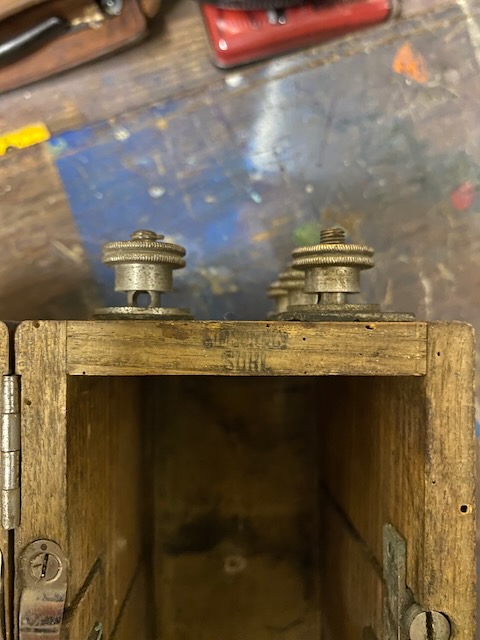
The wiring of the line, battery and patch contacts.
If the line side of a patchcord is connected the line is disconnected from the line plug and the patch plugs, to use the patchcord to patch to another line/instrument .
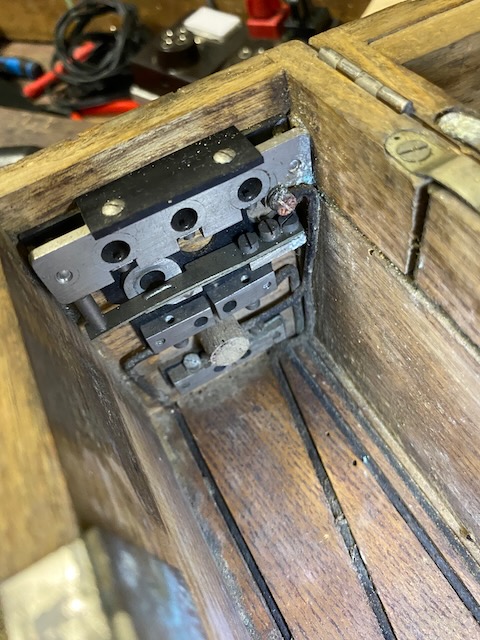
"Feldelemente" (none original, left non working based on an old swiss element, other two working, d-cells inside).
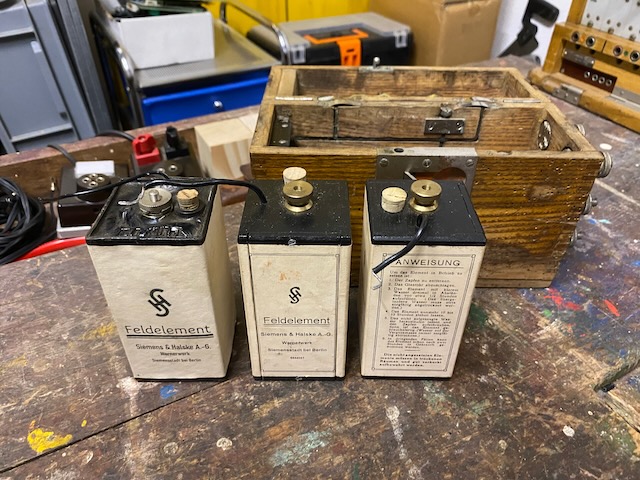
Elements inserted.
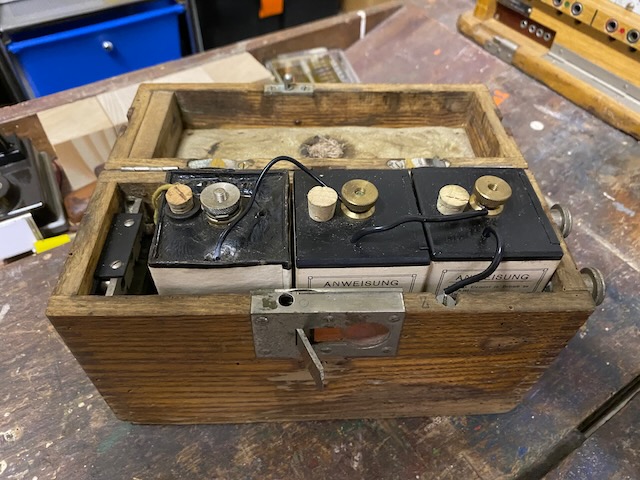
On the left a line label, on the right was the spelling table, here only the metal plate, the spelling table eroded away.
The box had to survive some woodworm attack.

The latch can be used to hang on a wall.
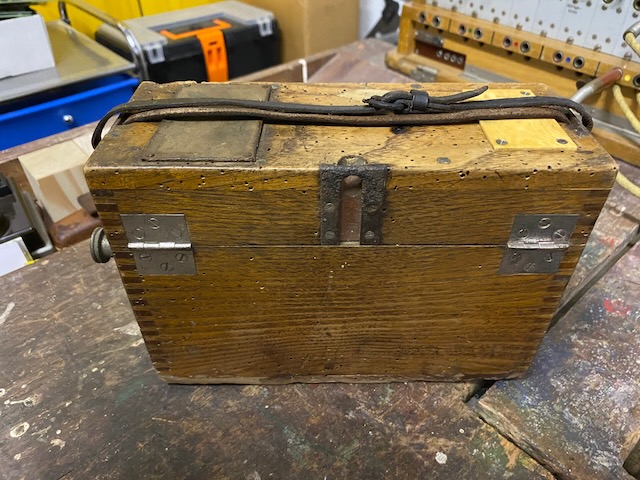
On the left side from bottom to top: the telephone line sockets (E, L), the battery sockets (K, Z), the line side patch socket (disconnects line from instrument and other patch sockets), and 5 instrument side patch sockets (3 in the bottom box and 2 in the lid).
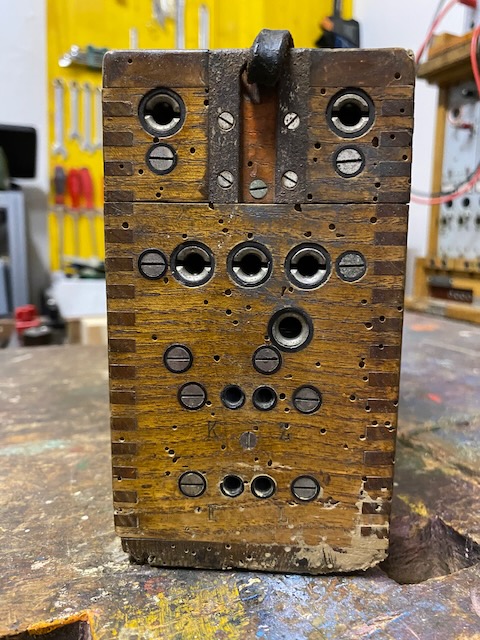
On the right the line (L1 .. 3) and earth connection.
The "Sprechbatterie der Feldartillerie" was intended for single wire setups.
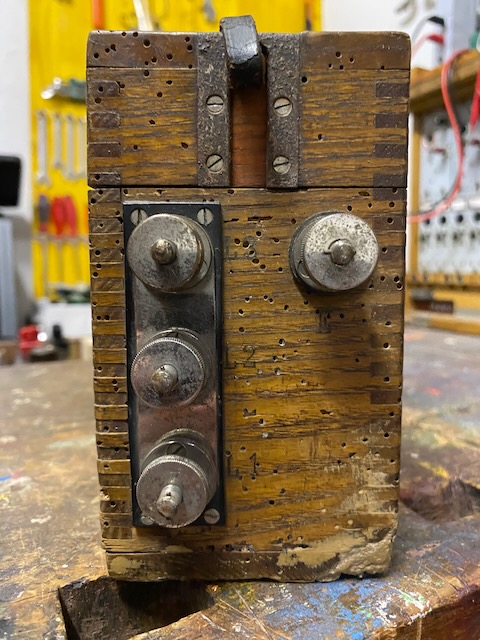
"Armeefernsprecher" diagram [1].
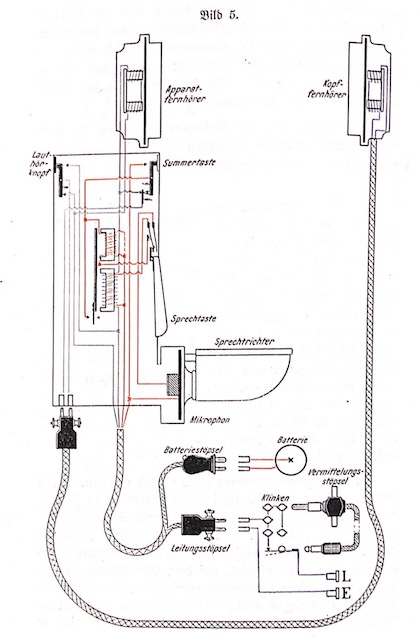
"Armeefernsprecher" cross section [1].
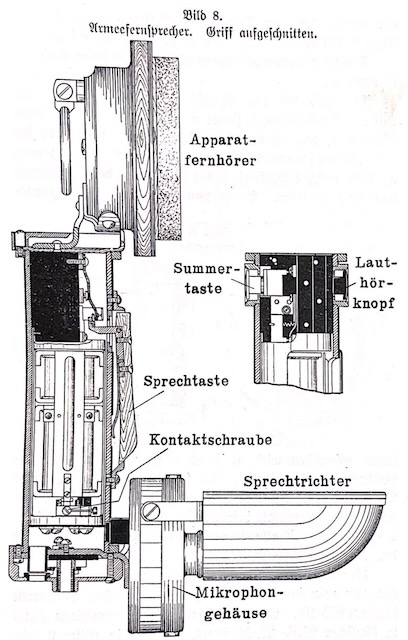
"Armeesprechbatterie" "diagram" [1].

Patchcord [1].
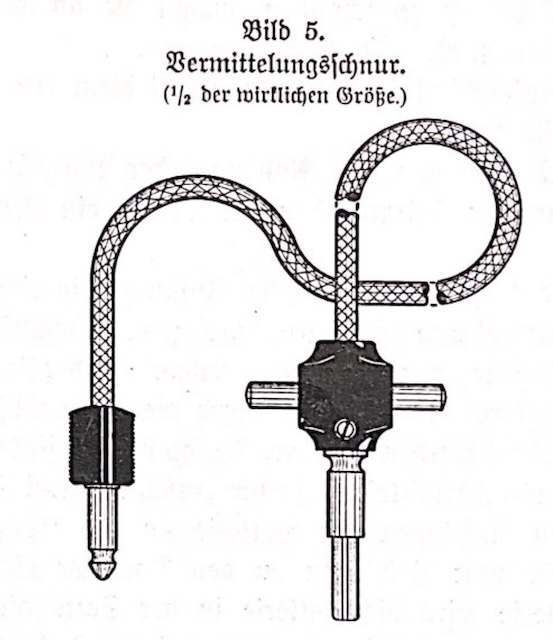
Creative Commons Attribution-ShareAlike 4.0 International License